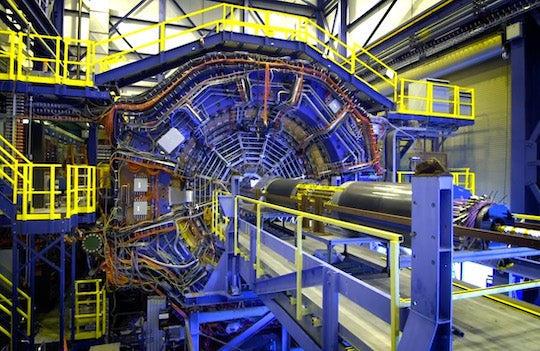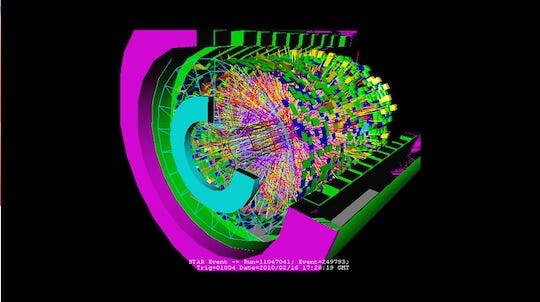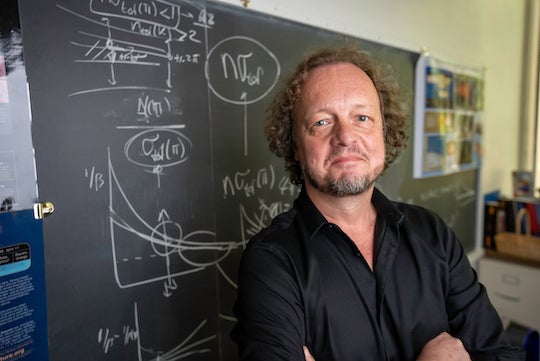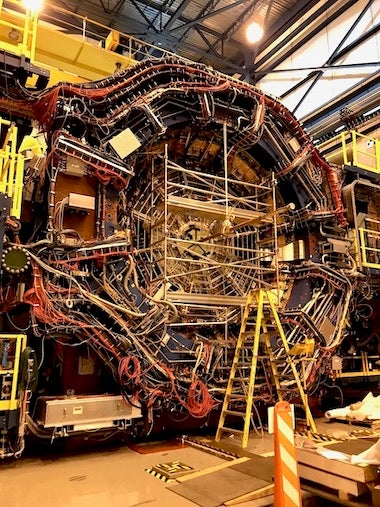Rice University physicist Frank Geurts is one of two scientists elected to lead the world's longest-running nuclear physics experiment at a particle collider facility, the Relativistic Heavy Ion Collider (RHIC) at Brookhaven National Laboratory.
Together with Brookhaven Lab physicist Lijuan Ruan, Geurts will serve a three-year term as co-spokesperson for the STAR collaboration. This group of over 740 scientists from 74 institutions across 15 countries uses a 1,200-ton, building-sized instrument ⎯ the Solenoidal Tracker at RHIC, or STAR detector ⎯ to study what happens when gold ions, protons, or a wide range of other atomic nuclei collide into or zoom past each other at ultrahigh speeds.
As co-spokesperson, Geurts will help manage operations for the STAR collaboration and detector system, acting as a representative of its technical and scientific activity.

"We want to make sure that students and institutes across the collaboration can work efficiently with the data collected by the detector and help disseminate our exciting results to the scientific community and the public," Geurts said.
RHIC, a 2.4-mile-circumference particle accelerator that is the world's second-largest after the Large Hadron Collider, re-enacts on a subatomic scale cosmic events such as the aftermath of the Big Bang or neutron star collisions. The STAR detector system captures and analyzes data generated by the particle collisions inside RHIC to gain insight into the behavior of nuclear matter under extreme conditions.
"We're investigating very fundamental properties of nuclear matter and the best way to do that is by pushing it to its very extremes," Geurts said. "Under extreme conditions like the Big Bang, but also when we have neutron star collisions or potentially even in supernovae, nuclear matter can melt into quarks and gluons ⎯ the substructure of these particles."
Data collected from the collisions offers scientists a snapshot of a primordial state of matter present in the first instants of the universe's existence known as quark-gluon plasma.

"It's basically a soup made up of the particles that form the substructure of protons and neutrons," Geurts said. "In this soup, these so-called quarks and gluons are effectively liberated, not knowing anymore to what neutron or proton they originally belonged. On top of that, because of the high energies, many more quarks and antiquarks are created in this hot soup. There's a high degree of collectivity in these multiparticle systems."
Using STAR, scientists learn about difficult-to-study fundamental forces that govern matter in the universe, such as the strong nuclear force.
"From early experimental results, we learned that quark-gluon plasma is not so much a hot gas of liberated quarks," Geurts said. "Instead, it has the characteristics of a hot and strongly interacting fluid with nearly no viscosity, behaving almost like an ideal liquid. This is very interesting, because ⎯ even though we are looking at what is truly the hottest place in the universe ⎯ we find effects of strongly interacting systems that at times look very similar to what you see in matter at ultracold temperatures."

The strongest of the four fundamental forces in nature (with gravity, electromagnetism and weak force being the other three), the strong force is what holds matter together both inside and outside the nucleons in atoms.
"Let's take a gold nucleus, for example," Geurts said. "You have a lot of neutrons ⎯ which carry no electrical charge ⎯ and protons packed together at the center of an atom. Because protons are positively charged, these particles repel one another, so something else must be way stronger than this electromagnetic force in order to keep them all together. That's the strong force at work."
Geurts' leadership role foregrounds Rice's long-standing contribution as one of STAR's founding members. Not only have Rice scientists been actively involved in the collaboration over its near-quarter-century duration, but the university has also helped improve the detector's particle identification capabilities.
"We can now say with much better precision what kind of particles we see being created in these collisions," Geurts said.

Geurts, who joined STAR in 2000 as a postdoctoral researcher, highlighted its role as a training ground for generations of scientists.
"We have graduate students who were not born when we started the experiment. We have professors who started their careers as graduate students in this experiment and now are leading new groups throughout the world in this endeavor. The data collected by STAR will continue to serve as an invaluable resource for many more doctoral theses and papers to come."
Both the detector and the collider are scheduled to run experiments and continue recording data through the end of 2025, after which they will cease operations. Components of RHIC will be transformed into an Electron-Ion Collider, which is expected to begin operation in the early 2030s.
"Our responsibility as a management team is to pave the way for STAR to continue being an innovative and productive scientific enterprise during its post-operational phase," Geurts said. "We expect that STAR will continue to come up with very exciting science for five, eight, maybe ten years after we record our last heavy-ion collision in 2025."
- Video:
-
(Video by Brandon Martin)
- Image downloads:
-
CAPTION: Frank Geurts, a Rice University physics and astronomy professor, has been elected co-spokesperson of the STAR experiment, the world's longest-running nuclear physics collider experiment at a particle accelerator facility. (Photo by Gustavo Raskosky/Rice University)
CAPTION: The STAR detector at the Department of Energy's Brookhaven National Laboratory (Courtesy of Brookhaven National Laboratory)
CAPTION: A computer rendering of a collision in the STAR detector (Courtesy of Brookhaven National Laboratory)
CAPTION: The STAR detector at the Department of Energy's Brookhaven National Laboratory (Courtesy of Frank Geurts/Rice University)






